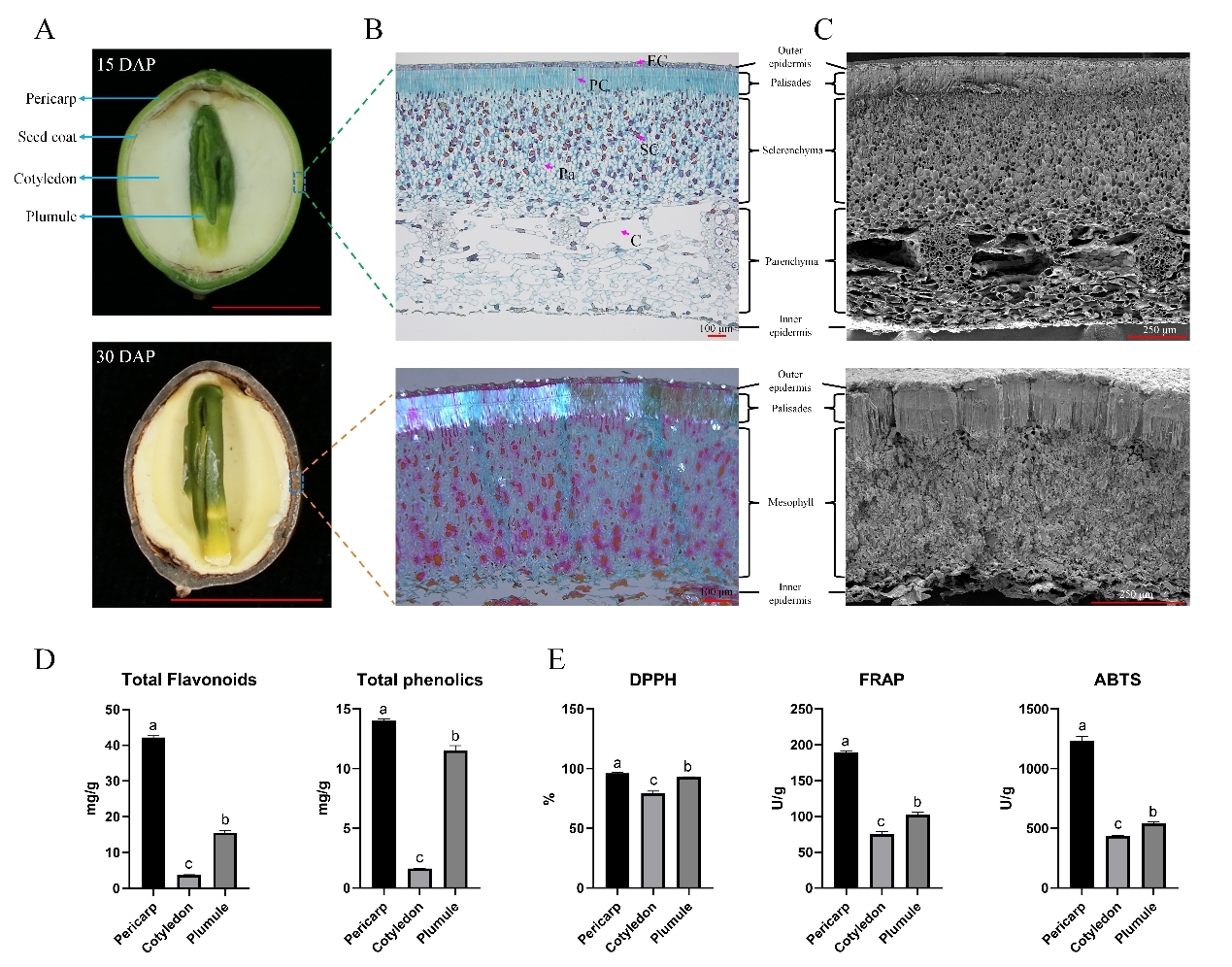What Makes Lotus Seeds so Longevity?
2024-10-31
Seeds play a vital role in the plant life cycle, and seed longevity is a key factor in determining their suitability for long-term storage. Lotus seeds can survive for thousands of years in natural conditions and even germinate under optimal conditions. Understanding the mechanisms underlying lotus seed longevity could provide new strategies for the successful long-term storage of seed crops.
Recently, a research team from Wuhan Botanical Garden systematically investigated the components of lotus seeds, specifically the pericarp, cotyledon, and plumule, at physiological, biochemical, and molecular levels to elucidate the inherent mechanisms contributing to their longevity.
The lotus seed pericarp exhibits a robust structure and contains an abundance of antioxidants, including flavonoids and phenolics, which serve as crucial protective shields for the seed. The cotyledons primarily accumulate starch, providing a rich nutrient source that supports the seeds during long-term storage and germination. Meanwhile, the plumules activate multiple defense mechanisms against stress during dehydration and ripening. The presence of chlorophyll in the plumules facilitates rapid sprouting.
Both artificially aged lotus seeds and ancient lotus seeds were used for transcriptome sequencing analysis, revealing a reduced abundance of transcripts related to heat shock protein genes, which may impact protein processing and diminish the vitality of aging lotus seeds. Additionally, there was an expansion in the number of seed maturation and defense response genes within the lotus genome, potentially reflecting an adaptive strategy against the challenges of long-term storage conditions.
Overall, these findings significantly enhance our understanding of lotus seed longevity and provide valuable insights for improving seed storage and production practices.
This research was funded by the Biological Resources Programme, Chinese Academy of Sciences, the Hubei Province Supporting High Quality Development Fund Project for Seed Industry, and the National Natural Science Foundation of China.
The results have been published in the Journal of Experimental Botany entitled “Unveiling the secrets of lotus seed longevity: insights into adaptive strategies for extended storage”. (Online: 2024-10-21)

Lotus seed pericarp observations at 15 and 30 days after pollination (DAP). (A) The lotus seed structure. (B) Light microscopic and (C) scanning electron microscopic (SEM) images of lotus seed pericarp. (D) Contents of total flavonoids and total phenolics in the seeds of the lotus cultivar ‘Jianxuan17’. (E) Antioxidant activities in the seeds of the lotus cultivar ‘Jianxuan17’ (Image by WBG)